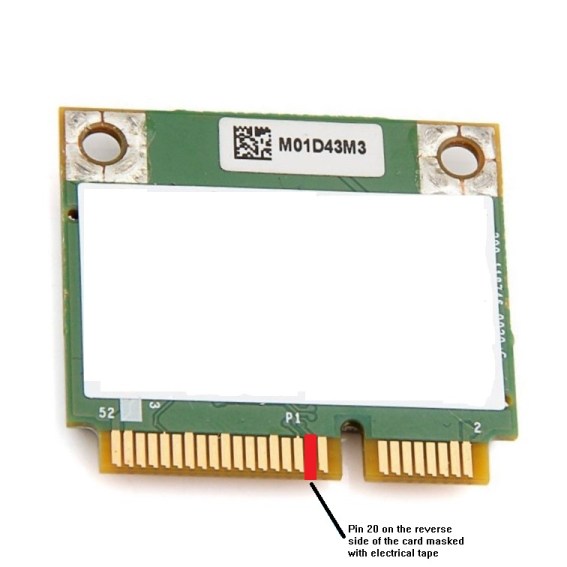
Dell 1501 half mini PCI-E 802.11n WiFi card
So i was trying to install a WiFi card(Dell 1501 half mini PCI-E 802.11n card) which i had lying around from 7 years ago in my laptop. Everything worked perfectly until i tried to query the networks available. I saw that the wireless connection was turned off. I went through the usual exercise of checking the drivers, then the antenna and checking if the card was seated right in the PCI-E slot. The card would never turn on. Since it was a re-branded Broadcom chipset i tried installing the Broadcom drivers as well as the dell drivers, no dice. Then i started reading up on the Mini PCI-E specifications for the WiFi card.
Older generation of WiFi mini PCI-E cards from a while ago usually have a hardware kill switch. This RF kill switch was usually connected to one of the pins on the Mini PCI-E header. Modern laptops are unable to turn on the WLAN card. Modern laptops can read and initialize the PCI-E card, but the radio part of the card is turned off.
From reading up on the spec sheet of several WLAN Mini-PCIE card from 7 years ago i found that that Mini-PCIE pin 20 which according to the specs was reserved for vendor specific purposes was being utilized as a RF kill switch.Similarly in cards with WiFi and Bluetooth, pin 51 is set for Bluetooth disable along with the pin 20 for WLAN disable.

Now i have to identify the pins in my Mini PCI-E card. Luckily the mini PCI-E pins 1,2,51,52 were marked in my card. Mini PCI-E cards have the first pin on the front side and the second pin on the reverse. They alternate with odd pins on the front side of the card and the even pins on the reverse side.


So to make the card work i masked pin 20 carefully with an electrical tape to isolate it. And PCI-E card started working normally. You can use any type of tape that is non conductive. PVC tapes work best. One has to be very careful while cutting and pasting the masking as it should not mask any other pin.

When a PCI-E pin is not connected it may start bouncing.and hence in newer PCI-E card this pin is driven with a 1 or 0 to enable or disable the card. Older generation cards just kept the pin open and hence when connected to a modern laptop without the masking think that RF is always disabled.
This has worked for me. The author cannot be held responsible for any loss or injury if you decide to follow my lead.